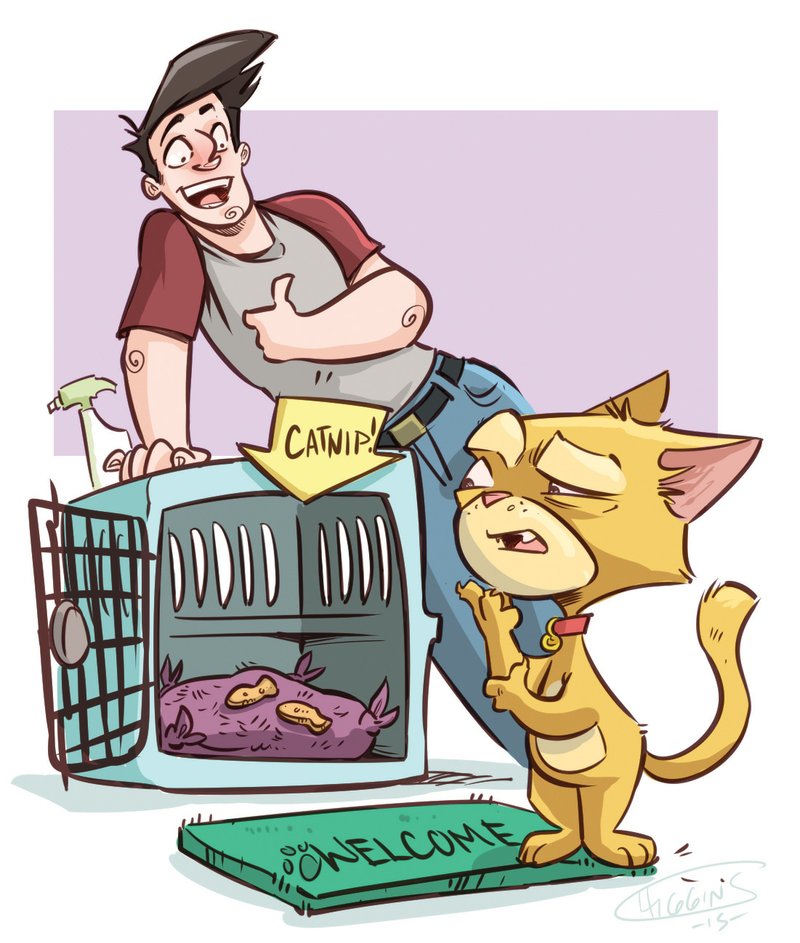My dog loves her crate and will take naps in it. My sister has a cat and bought a crate so she could put her cat in it for trips to the vet, but she hasn't had any luck getting Mimsy to use it. Mimsy is a smart cat and I told my sister I think cats can be crate-trained, but I don't know how to go about it. Any ideas?
Cats, like dogs, enjoy having a place to call their own so, yes, a cat can be trained to be comfortable in a crate. The key to crate-training a cat is to simply make it an inviting place and to let the cat accept the crate on its terms.
Crates can be handy and helpful for owners and the cats. As anyone who has tried it knows, wrestling a reluctant cat into any kind of container for a trip to the veterinarian can be stressful for the cat and painful for the owner -- sharp claws, ouch. When the cat sees the crate as a good place, life is so much calmer.
Training a cat to accept a crate is mostly a matter of patience, according to Vetstreet.com. The process also involves creating positive associations with the crate for the cat. Most of the time, the crates comes out of the closet only when a cat is going to the vet's office, so the cat learns to associate the crate with discomfort and stress.
The first step to making a crate a happy place for the kitty involves keeping the crate in plain sight so it becomes a normal part of its environment. Set it on the floor in the corner of a room or in an area where Mimsy enjoys lounging or that she considers a refuge. Take the door off the crate so it doesn't move or startle the cat when she approaches it. And she will approach it. Use that curiosity thing to your advantage and reward Mimsy for her exploration.
Create a cushy haven by adding a soft pad or blanket to the crate; whatever is used, first rub it on the cat so it has her scent. An article at cats.about.com also suggests spraying the inside of the crate with Feliway to help calm a fearful cat. Feliway contains a synthetic version of the hormone mother cats emit when nursing their kittens.
Another tactic is to entice a cat to the explore the crate by placing tasty food treats or catnip-scented toys inside. The point is to make Mimsy feel like the crate is a great place to be.
After a week or so, the cat should start feeling comfortable about the crate. The cat may even start hanging out or napping in the crate. Maybe not, but it's possible. At that point, it's time for the second phase of training -- teaching the cat to feel OK about being in the crate with the door closed.
Put the door back on the crate, then when Mimsy goes into it, wait a second and gently shut the door, but don't latch it. Talk to the cat in a soothing voice, praising her for staying in the crate. Then open the door and give the cat a special treat that's reserved for only this experience. If the cat isn't food motivated, reward her with a play session or a favorite toy.
During the training period, make sure there's nothing about the crate that's upsetting to the cat. Never force Mimsy to enter or let her feel trapped. If your sister has children, make sure they understand they shouldn't disturb the cat when she's in her private hideaway.
After the cat seems OK with being in the crate with the door shut for seconds or a minute, try shutting and latching the door. Repeat the release and reward process, then gradually increase the amount of time the cat spends inside the crate. When she's able to spend 10 minutes inside and stays calm, it's time for a test drive -- to the car. Carry the cat in the crate to the car and set it inside. If the cat stays calm, start the car. If that goes well, drive around the block, then take Mimsy back home and release her from the crate.
When Mimsy is crate-trained, don't put the crate back in the closet. For the positive associations to continue, the crate needs to be a part of the cat's daily life.
Family on 01/21/2015
